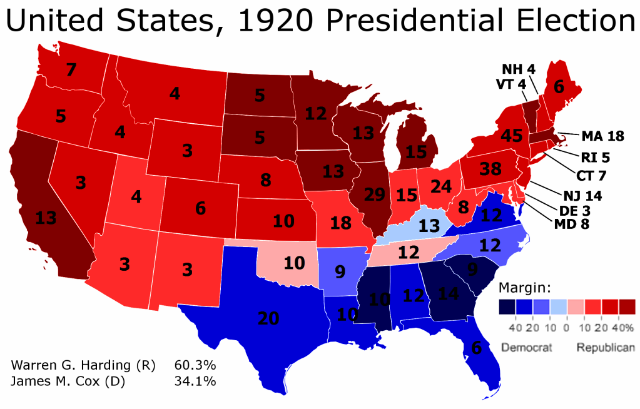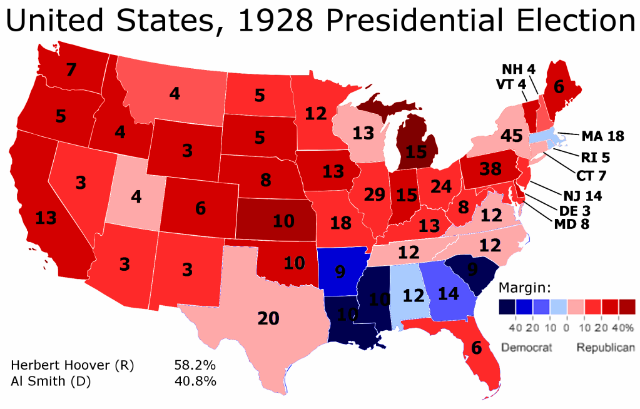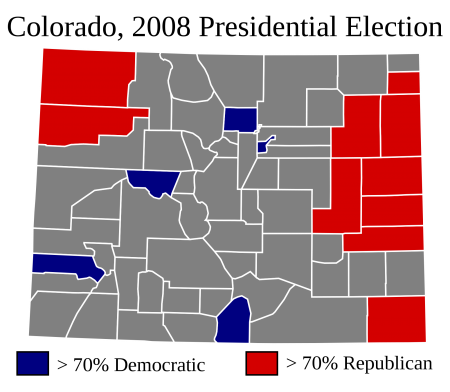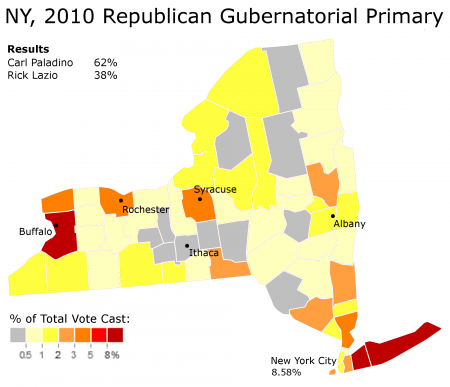This is the second part of three posts analyzing the Democratic Party’s struggles during the 1920s, when it lost three consecutive presidential elections by landslide margins. This will focus upon the 1920 and 1924 presidential election, when white ethnic immigrants abandoned the Democratic Party.
The last part can be found here.
The 1920 Presidential Election

The Democratic Party of the early twentieth century was composed of two bases (both of which no longer vote Democratic). These were Southern whites and immigrant, often Catholic, whites from places such as Ireland and Italy. Southern whites voted Democratic due to the memory of the Civil War and could be reliably whipped up with race-baiting appeals. Immigrant ethnic whites, on the other hand, saw the Democratic Party as a vehicle of defense against the dominant, Republican-voting WASP majority in the Northeast and Midwest.
The two groups had precious little in common, save distrust of the dominant Republican Party. One of the constituencies would often only lukewarmly support the national Democratic candidate (this was usually the immigrant camp, because without Southern whites the Democratic Party was nothing).
In 1920, ethnic whites walked out of the Democratic Party.
More below.




